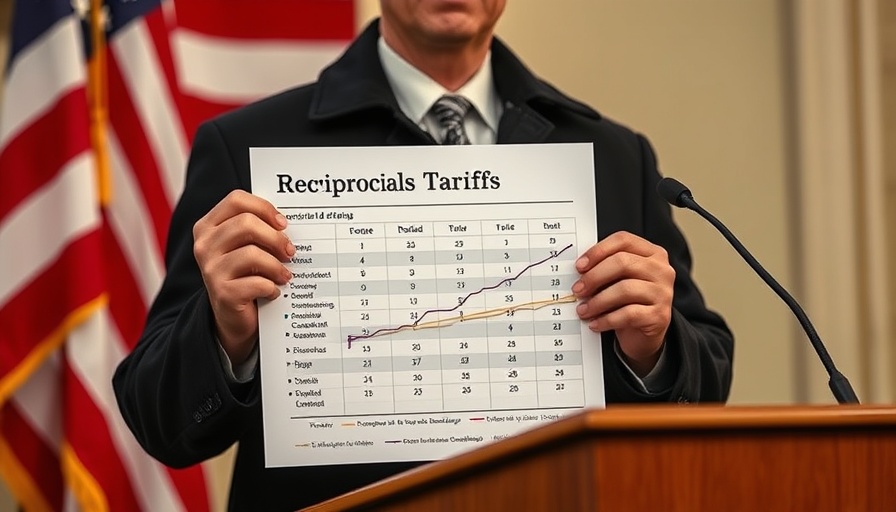
The Countdown to Trump's Tariff Decision
As July 9th approaches, U.S. consumers and investors are left in a state of high anticipation about President Donald Trump's looming tariff decision. After a 90-day freeze on reciprocal tariffs, Trump now faces the significant challenge of negotiating trade agreements that could have substantial implications for the American economy. The recent history of tariff negotiations, marked by volatility and uncertainty, adds a layer of complexity that is felt acutely by those waiting for clarity amid a backdrop of rising inflation and market fluctuations.
The Ripple Effects of Tariff Changes
Economists are warning that consumers could soon see an increase in the cost of goods due to current tariff rates, with Pantheon Macroeconomics noting an “imminent risk” of a jump in prices following Trump's deadline. With predictions that tariffs can push consumer prices up from 1% to 1.5%, the potential impacts are wide-reaching, underscoring the reality that millimeters of movement in trade policy can reshape economic landscapes.
Expectations vs. Reality: The 'TACO' Phenomenon
Investors are very familiar with what has been termed the “TACO” strategy—the notion that Trump often walks back hardline stances amidst negotiations. This pattern has created a cyclical market response with an initial drop upon tariff announcements followed by a surge when threats are retracted. However, experts caution that such a dynamic cannot sustain indefinitely and with Trump’s approval ratings continuing to slip, the forthcoming decisions may require a balancing act that appeases both markets and political pressures.
Preparing for Market Uncertainty
Business leaders and stakeholders are left grappling with the uncertainty that lies ahead. Dan Ives from Wedbush Securities highlighted that “time’s ticking to get deal frameworks in place.” For businesses across various sectors, this uncertainty can translate into cautious planning and strategic spending as they await the outcomes of delicate negotiations. It is crucial for companies to adapt quickly to changes in the trade landscape to minimize potential disruptions and capitalize on emerging opportunities.
The Larger Implications of Trade Policies
This crucial week signals more than just tariff adjustments; it could forecast the future trajectory of U.S. trade relations on a global scale. If these tariffs remain in place, it could tighten economic growth and supply chains further, particularly as businesses navigate ongoing challenges surrounding logistics and consumer demand. Understanding the implications of these decisions is essential for business professionals aiming to align their operations with this rapidly evolving landscape.
In conclusion, the upcoming decisions related to tariffs will have immediate repercussions for businesses and consumers alike. With ongoing discussions swirling around international agreements and trade strategies, it is imperative for professionals to stay informed and strategically nimble in the face of these massive unknowns. Don't hesitate to explore opportunities and position your business advantages as this situation unfolds!
 Add Row
Add Row  Add
Add 



Write A Comment